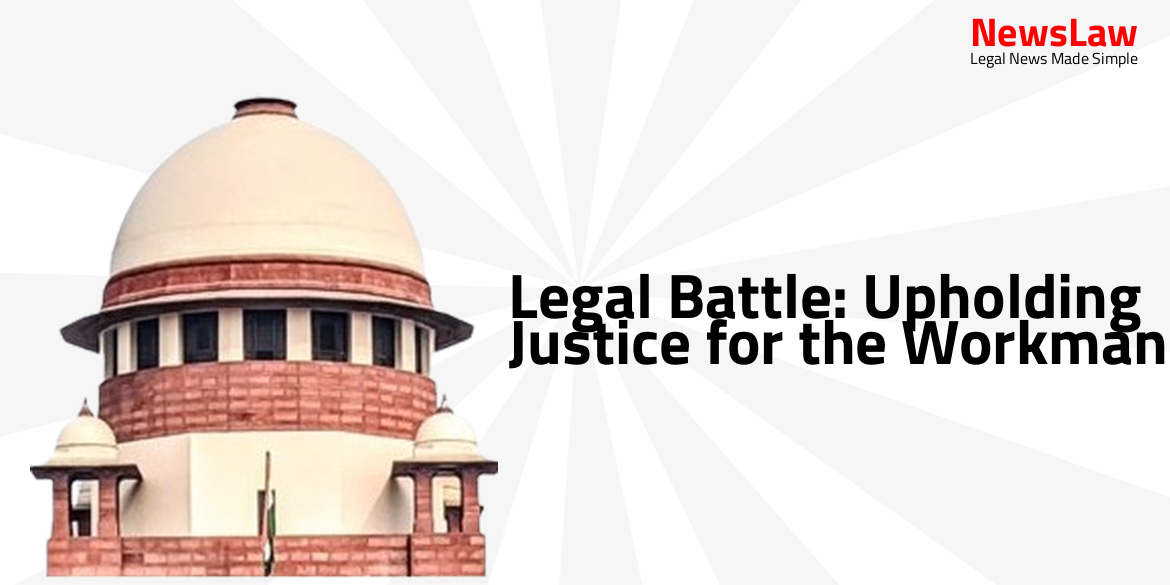The court’s thorough legal analysis of Sections 3 and 6 of the Central Sales Tax Act sheds light on crucial aspects of interstate sales and tax exemptions. The judgement discussed concerns raised by trade associations, disputed circulars issued by the Commissioner, and emphasized the importance of analyzing each case individually. Explore the nuanced discussion on constructive delivery, exemptions, and implications for tax administration authorities in this insightful legal summary.
Issue
- Four appeals being addressed due to a common question of law under Sections 3 and 6 of the Central Sales Tax Act, 1956.
- Issue pertains to whether tax authorities can impose limits or timeframes for taking delivery of goods from a carrier under Section 6(2) of the 1956 Act in interstate sales.
Also Read: Legal Analysis: Ownership Dispute and Validity of Will Deed
Analysis
- Sale or purchase of goods deemed to be in the course of inter-State trade or commerce if it occasions movement of goods from one state to another or involves transfer of documents of title during movement
- Liability to tax on inter-State sales imposed on dealers by the Central Government
- Exemption from tax under certain conditions for subsequent sales during the movement of goods in inter-State trade or commerce
- Special provisions for exemption from tax for certain entities like foreign diplomatic missions or consulates
- Requirement of furnishing certificates for tax exemption in inter-State sales
- The revenue is arguing that sale of goods occurred through bilty on separate orders after a reasonable time, implying constructive delivery by the transporters to the consignee.
- The circulars issued by the Commissioner regarding constructive delivery are seen as potentially hindering the discretionary powers of assessing authorities.
- The court states that such hindrance is not appropriate in interpreting the provisions of Section 3 of the 1956 Act.
- There is no evidence to suggest acknowledgment from the independent transporter.
- Concerns raised by trade associations about hardship and harassment caused due to large exemptions under certain provisions.
- The court considered the delay in transfer of documents from the transport company to the firm and its implications on the deemed delivery of goods.
- The court discusses the legality of circulars in context of Sections 3 and 6 of the 1956 Act, specifically highlighting issues with the circulars dated 16.9.1997 and 15.4.1998.
- The High Court’s decision to quash the circulars and uphold the retail sales tax exemption was not interfered with.
- The court emphasizes the importance of analyzing each case individually regarding the concept of constructive delivery before denying CST exemption.
- Issues related to local vs. inter-state sales tax implications in various cases are also discussed.
- The High Court referred to two decisions, one by the Rajasthan High Court in the case of Guljag Industries Limited vs State of Rajasthan & Another, and the other by the Delhi High Court in Arjan Dass Gupta and Brothers vs Commissioner of Sales Tax, Delhi Administration.
- The High Court disagreed with the proposition of law by the Commissioner in the impugned circulars regarding the termination of transit, citing legal positions from the mentioned cases.
- The Delhi High Court’s decision in Arjan Dass Gupta and Bros. v. Commissioner of Sales Tax, New Delhi provided guidelines on exemption of sales under Section 6(2) of the CST Act.
- The Rajasthan High Court, in the case of Guljag Industries Limited, disagreed with the view of the Delhi High Court on the implication of the expression ‘delivery’ in Section 3(b) of the 1956 Act.
- The judgement emphasized that normally, delivery of goods is taken by the importer immediately after the goods land in the importing State, and the landing of goods and the delivery are almost simultaneous acts.
- The commercial facts mentioned made it difficult to accept the retailer’s contention that the movement of goods continues even after landing in the importing State if the documents of title are transferred to retailers who take delivery at a later time.
- The judgement highlighted that if taking delivery is the test of termination of movement and not the landing of goods in an importing State, Explanation 1 to Section 3(b) of the Central Sales Tax Act could lead to anomalous results.
- Tax Administration Authorities cannot supply words to legislative provisions to cure omissions or give their own interpretation based on trade practice.
- If unintended benefit is being taken under the provisions of the 1956 Act, the proper course is legislative amendment.
- The interpretation of the Division Bench of the Delhi High Court in the case of Arjan Dass Gupta is considered incorrect.
Also Read: Analysis of Curative Jurisdiction in Legal Dispute
Decision
- Any connected applications disposed of.
- No order as to costs.
- High Court judgments not interfered with.
- Four appeals dismissed.
Also Read: Contractual Interpretation in Real Estate Dispute
Case Title: COMMERCIAL TAX OFFICER Vs. M/S BOMBAY MACHINERY STORE (2020 INSC 368)
Case Number: C.A. No.-002217-002217 / 2011



